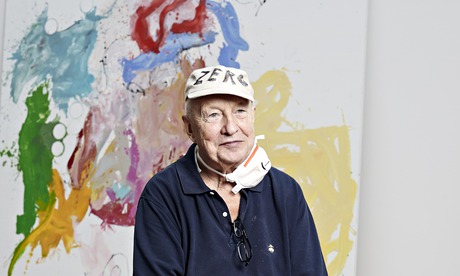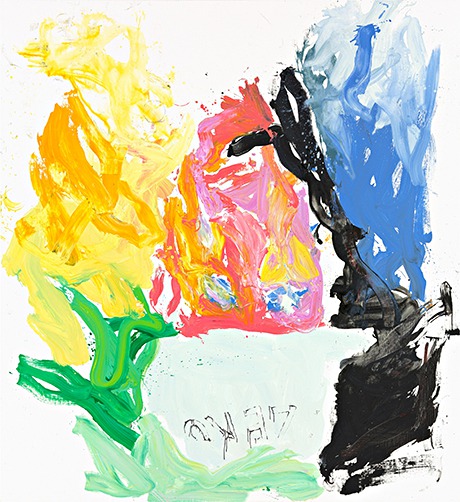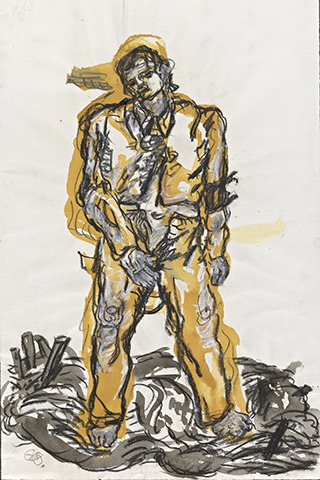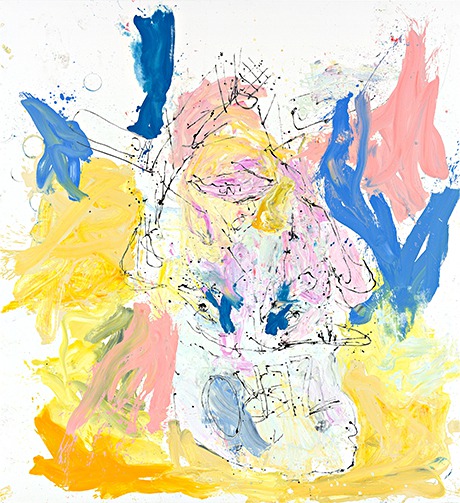

Ben Chen
"Cronos syndrome" can refer to two distinct concepts: a psychological fear of being replaced at work, and a medical prodromal syndrome indicating an impending mood episode, such as a depressive or manic episode. The former is a non-clinical term for a manager's fear of being displaced by a subordinate, often leading to micromanagement, while the latter is a clinical concept studied in psychology and psychiatry.
「克洛諾斯症候群」可以指兩個不同的概念:一個是對工作中被取代的心理恐懼,以及一種醫學前驅綜合徵,指即將發生的情緒發作,例如憂鬱或躁狂發作。前者是非臨床術語,指管理者害怕被部屬取代,這常常導致他們進行微觀管理;而後者則是臨床概念,研究心理學和精神科。
漢清講堂聚會談「未之聞齋 四本書2019」10月30日周三 15點~18點":
批判西潮五十年:未之聞齋中西藝術思辨, 727頁,論「抽象」,pp.379~415,為何先生的力作。篇中引用 The Story of Art,第14版的"末章"對現代主義的批判。E. H. Gombrich 的名著各版都會加1節,第15版加 Another turning of the tide,先說"後現代"的創始、旗手Charles Jencks 的說法過分簡化.......,
第16版加 The changing past 一節,都很可參考。
什麼是幸福:未之聞齋人文藝術論集,591頁
《批判西潮五十年》、《什麼是幸福》、《矯情的武陵人 批評文集》717頁、《珍貴與卑賤:未之聞齋散文.隨筆》489頁
-
-
MIT’s North Court is now named after Susan Hockfield, MIT’s 16th president. "As the first woman and first life scientist to serve as president, I felt a particular responsibility for paving new paths and setting new directions that would be welcoming to all," said Susan Hockfield.
The scenic quad formerly known as North Court, one of the major gateways to campus from Main Street and Kendall Square, is now Hockfield Court, in honor of Susan Hockfield, who was president of MIT from 2004 to 2012.
秋光掠影
Wikipedia co-founder Larry Sanger’s long-standing claims of liberal bias and mismanagement at the world’s dominant online encyclopedia are being enthusiastically embraced on the right. https://wapo.st/478jPhx
游常山
據報導,Google的人工智慧模型在癌症治療研究領域取得了突破性的科學發現,標誌著人工智慧在醫學應用領域的里程碑。透過分析大量資料集、識別模式並以前所未有的速度產生洞察,人工智慧幫助發現了潛在的治療方法,從而加速有效癌症療法的研發。 這項突破展示了人工智慧在生物醫學研究中的變革潛力,而傳統方法通常需要多年的實驗和分析。谷歌的模型可以快速處理複雜資訊、模擬結果並提出新穎的假設,為研究人員提供標靶治療和個人化醫療的新途徑。專家認為,這可以顯著減少開發創新療法所需的時間和資源,並有可能在過程中挽救無數生命。 雖然這項發現仍處於早期階段,但它凸顯了人工智慧作為協作工具在科學創新中日益重要的作用。研究人員強調,人類監督對於驗證研究結果、進行臨床試驗以及確保新療法的安全性和有效性仍然至關重要。儘管如此,像這樣的人工智慧驅動的發現,凸顯了未來科技將加速解決人類面臨的一些最迫切的健康挑戰。 谷歌的成就不僅代表了癌症研究的飛躍,也體現了人工智慧如何徹底改變科學研究的方式,以彌合數據分析與現實世界醫學突破之間的差距。
Google’s artificial intelligence model has reportedly made a groundbreaking scientific discovery in the field of cancer treatment research, marking a milestone in the application of AI to medical science. By analyzing vast datasets, identifying patterns, and generating insights at unprecedented speeds, the AI has helped uncover potential therapeutic approaches that could accelerate the development of effective cancer treatments.
The breakthrough demonstrates the transformative potential of AI in biomedical research, where traditional methods often involve years of experimentation and analysis. Google’s model can rapidly process complex information, simulate outcomes, and propose novel hypotheses, offering researchers new avenues for targeted therapies and personalized medicine. Experts believe this could significantly reduce the time and resources needed to develop innovative treatments, potentially saving countless lives in the process.
While the discovery is still in early stages, it underscores the growing role of AI as a collaborative tool in scientific innovation. Researchers emphasize that human oversight remains essential for validating findings, conducting clinical trials, and ensuring the safety and efficacy of new therapies. Nonetheless, AI-driven discoveries like this one highlight a future in which technology accelerates progress in tackling some of humanity’s most pressing health challenges.
Google’s achievement not only represents a leap forward in cancer research but also exemplifies how AI can revolutionize the way science is conducted, bridging the gap between data analysis and real-world medical breakthroughs.
----
----
機器、演算法和數據正在重塑各國互動、談判和駕馭全球政治的方式。
《勞特利奇人工智慧與國際關係手冊》探討了人工智慧如何改變國際格局及其帶來的挑戰。
本書匯集了政策分析師、哲學家、政府官員、科學家、研究人員和商界代表的貢獻,對於從學生到政策制定者的所有人來說都是必不可少的。
Machines, algorithms, and data are reshaping the way nations interact, negotiate, and navigate global politics.
'The Routledge Handbook of Artificial Intelligence and International Relations' examines the ways in which AI is transforming the international landscape and the challenges this brings.
With contributions from policy analysts, philosophers, government officials, scientists, researchers, and business representatives, this book is essential for all, from students to policymakers.
wwww
Barbara Gips, Creator of Memorable Movie Catchphrases, Dies at 89
Her best-known tagline was also her first to be published, written for “Alien”: “In space no one can hear you scream.”

----
King and Pope make history by praying side by side
King Charles and Pope Leo made history in the Sistine Chapel by praying side by side - a first for the leaders of the Church of England and Catholic Church.
Under the scrutinising eyes of Michelangelo's Last Judgment, when Pope Leo said "let us pray", it meant everyone, including the King, closing a gap that stretched back to the Reformation in the 16th Century.


In the midst of World War II, Norman Rockwell spent days inside the White House, invited by President Franklin D. Roosevelt’s press secretary to observe the steady procession of people seeking an audience with the commander in chief.
The result was a four-panel drawing titled “So You Want to See the President!” that depicted visitors including two U.S. Senators, a Scottish military officer in tartan and Miss America. In the panels, watchful Secret Service agents stand among White House guests. Reporters gather around the press secretary, Stephen T. Early, shown with a pipe clenched in his teeth.
Those images appeared in the Saturday Evening Post in 1943
Georg Baselitz (1938- ) Georg Baselitz 80歲 (2018);donated seven works to the museum in Munich
Georg Baselitz (1938- )沒現身在The Oxford Companion to Twentieth Century Art.
IN GERMANY, THE NEW EUROPEAN Painters have addressed themselves directly or indirectly to the problems of postwar Europe. How can the ancient structures of European society be put back into repair? What is the role of friends and family? Can short-lived amours give us a sense of our own identity? Or is the daydream a better guide? Can everyday things have something to teach us? If so, how can that something be set out in painting?
Someone who has tussled with these questions is Georg Baselitz, who was born Georg Kern in 1938 in a village called Deutschbaselitz in Saxony. After Saxony was overrun by the Russians, he stuck it out in the East until he was old enough to move to Berlin. Bent on making art, he took half the name of his birthplace, by way of a keepsake, and enrolled in the art schools of the former German capital.
National Gallery of Art
Georg Baselitz has come to be regarded as a pioneer in the renewal of figurative painting and as a founder of the so-called international neo-expressionist movement. In the late 1950s Baselitz began to develop his own style of figurative painting, challenging the orthodoxy of abstraction in the twentieth century. Baselitz produced a group of paintings from 1965 to 1966, which he called his Helden or Hero paintings, of which “Man in the Moon—Franz Pforr” is an early example.

Georg Baselitz - Wikipedia, the free encyclopedia
en.wikipedia.org/wiki/Georg_Baselitz
Georg Baselitz (born 23 January 1938) is a German painter. He studied in East Germany, before moving to what was then West Germany. Baselitz's style is ...
In October 1963, the work, as well as the picture Der nackte Mann, shown in the West Berlin gallery Werner & Katz, was seized by the public prosecutor's office because ofimmorality. The criminal proceedings ended in 1965 with the return of the pictures.[citation needed]
Die große Nacht im Eimer

Artist Georg Baselitz
Year 1963
Type oil on canvas
Dimensions 250 cm × 180 cm (98 in × 71 in)
Location Museum Ludwig, Cologne
MoMA | The Collection | Georg Baselitz (German, born 1938)
www.moma.org/collection/artist.php?artist_id=366
German painter, draughtsman, printmaker and sculptor. After attending grammar school in Kamenz, near Dresden, he began studying painting at the ...
http://www.britishmuseum.org/whats_on/exhibitions/germany_divided.aspx
Germany divided
Baselitz and his generation
From the Duerckheim Collection
6 February – 31 August 2014
Free
Room 90 /Open late Fridays
Featuring over 90 extraordinary drawings and prints, this exhibition explores how six key post-war artists redefined art in Germany on both sides of the Iron Curtain.
All the artists in this exhibition came originally from eastern Germany and migrated to the West, the majority before the borders were sealed in 1961. Some had trained in East Germany, but it was in the West that their careers were established. As a generation, they came out of the experience of growing up in the aftermath of a Germany defeated in the Second World War, and its subsequent partition in 1949.
Much of their work is informed by the sense of collective guilt experienced by the German people over its recent past, the country’s physical and psychological destruction, and the division of the country by two opposing ideologies – the democracies of the free West and the Communist system of the Soviet bloc.
These remarkable works on paper, on public display for the first time, are on loan from the private collection of Count Christian Duerckheim. Half of them are by Georg Baselitz, with the remainder by Markus Lüpertz, Blinky Palermo, A R Penck, Sigmar Polke and Gerhard Richter. 34 of the works in the exhibition, including 17 by Baselitz, have been generously donated to the British Museum by Count Duerckheim.
The gift includes a group of 11 drawings by Baselitz from 1960 to the late 1970s, together with prints from the same period. They cover the principal phases of his career from the Pandemonium drawings of the early 1960s, the development of his ironic ‘Heroes’ in the mid-1960s, and the subsequent fracturing of his motifs to the eventual inversion of the motif from the late 1960s.
Other works on display include Richter’s Pin-up andInstallation drawings, the characteristic Ice Age-meets-cybernetics stick-figures of Penck, as well as sculptural drawings by Lüpertz and Palermo, and a drawing and sketchbook by Polke satirising the ‘economic miracle’ of post-war reconstruction in West Germany.
The donation completely transforms the Museum’s holdings of German post-war graphic art and enables the Museum to trace the history of drawings and printmaking in Germany from the time of Dürer to the present.

Ein neuer Type('A New Type'), 1965, Georg Baselitz (b.1938), grey and yellow ochre watercolour, charcoal, graphite and white pastel on paper. Presented to the British Museum by Count Christian Duerckheim, Reproduced by permission of the artist. © Georg Baselitz PreviousNext
1 of 6
Catalogue

Germany Divided: Baselitz and his generation
This title was published in January 2014 and includes 130 beautiful colour illustrations. Available in hardback with jacket.
Georg Baselitz: 'Am I supposed to be friendly?'
From his sculpture of a Hitler salute to his comments on women artists, Georg Baselitz has always been a provocative figure. After 50 years exploring the state of Germany, he tells Nicholas Wroe why he turned to America for his new show
The Guardian, Friday 14 February 2014 14.00 GMT
Jump to comments (13)

George Baselitz in his studio. Photograph: Martin Muller/Gagosian Gallery
In 1958 Georg Baselitz, then a 20-year-old art student recently arrived in West Berlin from East Germany, attended a touring exhibition of contemporary American painting staged at his university. "Until then I had lived first under the Nazis, and then in the GDR," he explains. "Modern art just did not occur so I knew almost nothing. Not about German expressionism, dadaism, surrealism or even cubism. And suddenly here was abstract expressionism. Paintings by Pollock, De Kooning, Guston, Still and many others, in the very buildings where I took classes every day. It was overwhelming. And not just for me. Even the professors had not seen this sort of work before."
Baselitz recalls that the artist he most admired from the exhibition was Jackson Pollock, but the one he understood best was Willem de Kooning, "because he was European". It was a distinction that would characterise his wider response to the show, and point towards the idiosyncratic road his career would take.
"The exhibition was a great shock not just because of the art," he says, "but also because while we knew that the British, the French and the Russians had something like culture, we didn't expect it from the Americans. For us the Americans were just show-offs who had absolutely nothing to offer intellectually. But now they had not only won the war, they also had the culture. This show was meant as an educational event for us misguided Germans, after which art, and artistic society, was meant to find the correct way. And most of my fellow students really did take something from the American exhibition and became integrated into the entire thing."
But for Baselitz the show marked the beginning of a different path. "I had to make a decision what to do with this new information. I knew that we had lost the war, and that we were lost. And I now also realised that I was not welcome in this culture because I was not a modern person. What I wanted to do was something that totally contradicted internationalism: I wanted to examine what it was to be a German now. My teachers were the first to tell me that I was wrong. They said it was anachronistic. We had lost the war, but now we were free and liberated and there were wonderful times ahead in a wonderful world. But I disagreed. I had another view."
In truth Baselitz had always been going his own way. He had been forced out of East Germany after being accused by the authorities of "political immaturity" at his first art school. Five years after arriving in the west, his debut gallery show attracted the attention of the police and he was fined for displaying an obscene picture that apparently depicted a masturbating dwarf. In the years since, both Baselitz's art (a 1980 Venice biennale sculpture was accused of representing a Hitler salute) and his comments (last year he was quoted in an interview claiming that women artists "simply don't pass the test"), have caused controversy. But now, over half a century after that Berlin exhibition, and his refusal to join in with the artistic orthodoxy, Baselitz has returned to Willem de Kooning in an exhibition entitled Farewell Bill, which opens in the Gagosian Gallery in London this week.
The new paintings are a marked departure from recent works. Described as Remixes, these involved a riffing – apparently at great speed – on some of his most renowned previous paintings, and were greeted by a decidedly muted critical reaction. In contrast the De Kooning paintings – part self-portraits part homage – are large and attentively worked and, in a rare synchronicity of timing, form just one of three exhibitions in London over the next few months that feature different aspects of Baselitz's career. In March the Royal Academy will stage Renaissance Impressions: Chiaroscuro Woodcuts from Baselitz's own collection, an important influence on both his style and subject matter. And Germany Divided: Baselitz and His Generation has just opened at the British Museum, featuring works on paper from 1960 to the late 70s from the collection of Count Christian Duerckheim, who has recently donated to the museum a significant quantity of work by Baselitz, as well as by other German artists such as Markus Lüpertz, Sigmar Polke andGerhard Richter.
 Licht wil raum mecht hern. Copyright Georg Baselitz. Courtesy of the Gagosian Gallery Photograph: georg baselitz
Licht wil raum mecht hern. Copyright Georg Baselitz. Courtesy of the Gagosian Gallery Photograph: georg baselitzAll three shows cast light on Baselitz as simultaneously an international artist and an intensely German artist, reflecting the way his place on the global scene is always linked to his own past. "The German title of the De Kooning show is 'Willem raucht nicht mehr'", says Baselitz, speaking in his vast lakeside studio, designed by superstar architects Herzog & de Meuron, just outside Munich. "It literally translates as 'Willem no longer smokes', which also means in German 'is no longer alive'." The individual painting titles are anagrammatic variations on this phrase. "Sometimes they sound like children's language, or sometimes they sound like old German," he says, but as the catalogue essay notes, you might need to understand the Saxony dialect of his birthplace to get all the references. This is a very typical touch from an artist who says: "while I have always moved around a lot, I've always taken materials from that place with me. That's been important." One of the most important of those materials he has carried around is his own name.
Baselitz was born Hans-Georg Kern in 1938 in the Saxony town of Deutschbaselitz. As an art student in West Berlin he adopted the name of his home town, where his father was a primary school teacher and Nazi party member, and from where Baselitz can remember seeing Dresden burning in the distance after the firebombing of 1945. A few weeks after that event his family were sheltering in the basement of a building just outside the town when it was hit by artillery. During a pause in the shelling – "which we thought was a ceasefire, but was in fact just a breakfast break" – his mother loaded a handcart and set out with her children to escape the Russians advancing from the east. Smoke was still coming out of Dresden's destroyed buildings as they passed through the city, just one family among thousands of people trekking on foot across the country. "We wanted to get to Bavaria because we were told that the Americans were there. But we only made it to a village just to the south of Dresden when the Russians arrived."
By the time he was a teenager it was clear that Baselitz was not fitting into the GDR system and, after being expelled from art school, he effectively became an economic refugee. "When I stopped being a student I stopped getting vouchers that would allow me to buy groceries. I was told if I worked in industry for a year I could return to art school as I would by then have the right mindset. But I knew that would destroy me and so I chose to go to the west."
He describes himself as very "impatient" when he arrived in West Berlin. "I wanted to see results immediately and didn't start out reasonably, I started out radically." He wrote manifestos, one of which culminated with the line "All writing is crap." He found inspiration in the Prinzhorn Collection of art made by the inmates of a mental institution – some of which had figured in the Nazis' Degenerate Art exhibitions – and he embraced the psychologically extreme work of Antonin Artaud. Although he says it wasn't his intention to upset people, when his painting The Big Night Down the Drain was seized by the police in 1963 he also realised "it was fun to do something that people would be upset about. But I also wanted to do something extraordinary and serious and I felt very privileged to have the artist's power to contradict. You feel like you are the founder of a new religion, even if your congregation is only your wife and kids."
Baselitz had married Elke Kretzschmar in 1962 and they have two sons. He says that throughout most of the 60s "the chances for an artist, let alone an artist like me, to impose yourself and to make a living from your art was nil". But during this period his art made remarkable progress. Rejecting the orthodoxy of what was called tachism – the European version of abstract expressionism – he not only introduced figures into his work, but began to use specific German archetypes, motifs and folklore. But Baselitz's shepherds, woodsmen, hunters and so on were not conventionally heroic – although the paintings would later be called the Helden (heroes) series. Rather they were bedraggled, broken and shambolic figures rendered in messily desolate landscapes.
 A New Type. Copyright Georg Baselitz. Courtesy of the British Museum
A New Type. Copyright Georg Baselitz. Courtesy of the British Museum"In hindsight I think those pictures are complete pieces of art. But at the time it felt very chaotic and mixed up. I thought 'this can't be all' and I had to come up with new ideas." He set out on a series of strategies to disrupt both the work, and his making of the work. He painted with the canvas on the floor. (The floor of his studio closely resembles Jackson Pollock's on Long Island, with the difference that Baselitz doesn't insist that you wear protective shoes.) Then he started to "fracture" paintings into sections, with obvious echoes of a divided Germany, before he adopted the technique for which he is best known today, painting his motifs upside down – which directs both his, and the viewers, attention to the abstract aspects of the figurative work. He began to use his hands instead of brushes and when he moved to sculpting in wood he opted for the crude attack of the chainsaw over the precision chisel.
It was the row over his wooden sculpture at the 1980 Venice biennale that first brought him to an international audience. "I was in the German pavilion with Anselm Kiefer, another provocative artist, and it never occurred to me that my sculpture was doing a Hitler salute. But when a German TV channel reported on it they played the "Horst Wessel Song" [the Nazi anthem] to accompany their story. It was outrageous. But within a week I was getting approaches from all over the world to collaborate."
He says just being a German artist in the wider world could be contentious. "You sometimes felt that people were standing over you. Some of the prejudices that existed towards Germans were justified, but there were many prejudices. My work was also not really American-oriented, as Richter's is for example, and is instead very German and sometimes a bit obscene. Add that to being a kind of loud artist and then you will have encounters. Many of my advisers, especially my wife, say that I am too bold. But what am I supposed to do? Am I supposed to make statements that are politic? Am I supposed to be friendly? That's just not who I am."
No surprise then that he hasn't changed his mind about women artists. "Following the uproar I did think about this and it is a fact. I used to be a professor and 80% of my students were women. So there is a possibility for women and girls to study art, but they are less successful than the men. You can count and the numbers will prove me right." And he also casts a jaundiced eye over contemporary Germany, claiming it is rife with "injustice, vanity and dominance by the politicians" and hasn't yet properly dealt with its own history in terms of the Third Reich and the GDR. After reunification in 1990 he was not surprised to learn that the Stasi held a file on him, but was shocked that it was not for his correspondence with artists in the east when he was an adult, but his activities when at school. He is equally disillusioned with the stream of public intellectuals, such as Günter Grass, who took decades to acknowledge their membership of the SS. "These people dominated our culture. They were role models. They were mentioned in school textbooks. It is very depressing. It shows that no one is really free."
 Willem raucht nicht mehr. Copyright Georg Baselitz. Courtesy of the Gagosian Gallery Photograph: Georg Baselitz
Willem raucht nicht mehr. Copyright Georg Baselitz. Courtesy of the Gagosian Gallery Photograph: Georg BaselitzBut for all his provocations about women artists, two of them played important roles in his return to De Kooning. "I saw Tracey Emin's drawing at the biennale. I like her very much, and as I looked at her drawings I thought here was De Kooning. I had also seen De Kooning in a Richard Prince exhibition at the Guggenheim. Cecily Brown, another artist I like, also gets inspiration from De Kooning. This was all very interesting. When I look at the new art scene I find there is a lot of direct occupation – that is, not a copy, but it seems as if the art of the past has become the foundation of the present. And so I said I'm going to paint like De Kooning."
Baselitz turned 76 last month and still works every day in the studio: "I used to be able to paint all day and all night, but these days it is only for three hours in the morning. Working the wood is especially hard work, but two trunks have just been delivered from the Black Forest, so there is more to do." His current work in progress is a series of six, four-metre high, nude self-portraits. "Every now and again I do a self-portrait, and always in quite a strange manner. There are many models for the nude self-portrait: Lucian Freud, Schiele, Stanley Spencer, whose painting I don't like, but I did see a pencil nude portrait that was interesting. In a way it is a move away from De Kooning, I knew I had to do something enormous and silly."
• Farewell Bill is at the Gagosian Gallery, London WC1, until 29 March.Germany Divided: Baselitz and His Generation is at the British Museum, London WC1, until 31 August. Renaissance Impressions: Chiaroscuro Woodcuts from the Collections of Georg Baselitz and the Albertina, Vienna is at the Royal Academy, London W1, from 15 March.
DW Culture 在 Die Pinakotheken 。 德國慕尼黑 ·
The Pinakothek der Moderne added seven new gems to their collection: The German painter and sculptor Georg Baselitz is one of the most important contemporary German artists. In honour of His Royal Highness Duke Franz of Bavaria, he donated seven works to the museum in Munich. Here they are:






Georg Baselitz, upside-down artist of international renown, at 80 | Arts ...
www.dw.com/en/georg-baselitz-upside-down-artist-of-international.../a-42255012
Jan 23, 2018 - Georg Baselitz was thrown out of art school at the age of 18 because of his love for Picasso, and he has remained controversial and provocative ever since. To mark his 80th birthday, DWlooks back at his life and work.
Topsy turvy: German painter Georg Baselitz | All media content | DW ...
 ▶ 5:12
▶ 5:12www.dw.com/en/topsy-turvy-german...georg-baselitz/av-42396412
Feb 3, 2018 German painter Georg Baselitz literally loves flipping things on their head. Now that he has turned eighty ...
Georg Baselitz turns 80 | All media content | DW | 27.01.2018
 ▶ 4:28
▶ 4:28www.dw.com/en/georg-baselitz-turns-80/av-42223556
Jan 27, 2018 Georg Baselitz is viewed as one of the greatest living painters. For his 80th birthday, Basel's Fondation ...

Georg Baselitz
Georg Baselitz (born 23 January 1938, as Hans-Georg Kern, in Deutschbaselitz, Germany) is a German painter, sculptor and graphic artist. In the 1960s he became well known for his figurative, expressive paintings. Since 1969, he paints his subjects upside down in an effort to overcome the representational, content-driven character of his earlier work and stress the artifice of painting.[1] Drawing from a myriad of influences, including art of Soviet era illustration art, the Mannerist period and African sculptures, he developed his own, distinct artistic language.[2]
Since Baselitz grew up amongst the suffering and demolition of World War II, the concept of destruction plays a significant role in his life and work. These autobiographical circumstances have therefore returned throughout his whole oeuvre. In this context, the artist stated in an interview: "I was born into a destroyed order, a destroyed landscape, a destroyed people, a destroyed society. And I didn't want to reestablish an order: I had seen enough of so-called order. I was forced to question everything, to be 'naive', to start again."[3] By disrupting any given orders and breaking the common conventions of perception, Baselitz has formed his personal circumstances into his guiding artistic principles.[4] To this day, he still inverts all his paintings, which has become his unique and most defining feature in his work.
Contents [hide]
1Life
2Work
2.11957–1969
2.1.1Series of Heroes and Fractures
2.1.2Inverted paintings
2.21970–1975
2.31976–1980
2.41981–1989
2.51990–2009
2.62010–2013
2.7Since 2014
3Style
4Honours and awards
5Works
6Bibliography
7See also
8References
9External links








沒有留言:
張貼留言